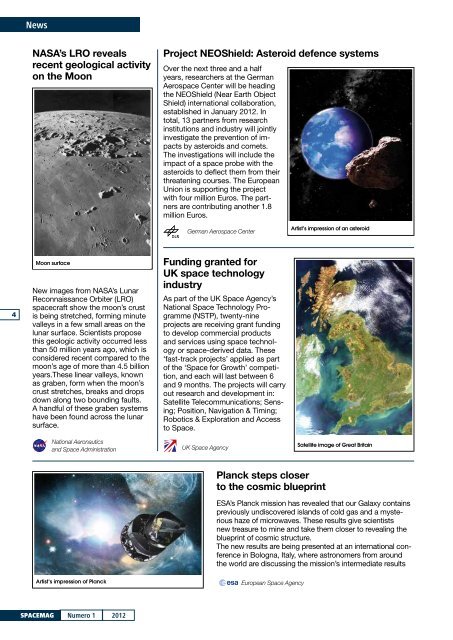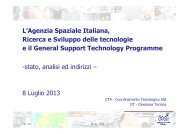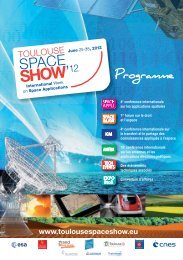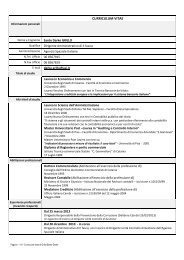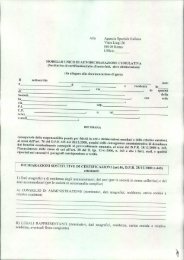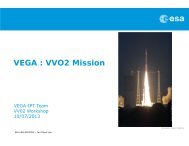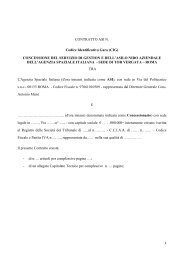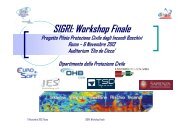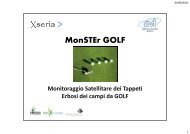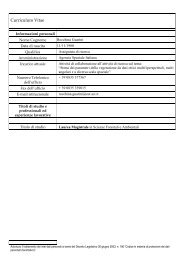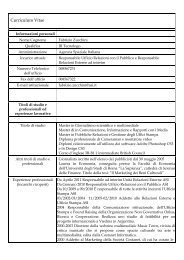NewsNASA’s LRO revealsrecent geo<strong>lo</strong>gical activityon the MoonProject NEOShield: Asteroid defence systemsOver the next three and a halfyears, researchers at the GermanAerospace Center will be headingthe NEOShield (Near Earth ObjectShield) international collaboration,established in January 2012. Intotal, 13 partners from researchinstitutions and industry will jointlyinvestigate the prevention of impactsby asteroids and comets.The investigations will include theimpact of a space probe with theasteroids to deflect them from theirthreatening courses. The EuropeanUnion is supporting the projectwith four million Euros. The partnersare contributing another 1.8million Euros.German Aerospace CenterArtist’s impression of an asteroid4Moon surfaceNew images from NASA’s LunarReconnaissance Orbiter (LRO)spacecraft show the moon’s crustis being stretched, forming minutevalleys in a few small areas on thelunar surface. Scientists proposethis geo<strong>lo</strong>gic activity occurred lessthan 50 million years ago, which isconsidered recent compared to themoon’s age of more than 4.5 billionyears.These linear valleys, knownas graben, form when the moon’scrust stretches, breaks and dropsdown a<strong>lo</strong>ng two bounding faults.A handful of these graben systemshave been found across the lunarsurface.Funding granted forUK space techno<strong>lo</strong>gyindustryAs part of the UK Space Agency’sNational Space Techno<strong>lo</strong>gy Programme(NSTP), twenty-nineprojects are receiving grant fundingto deve<strong>lo</strong>p commercial productsand services using space techno<strong>lo</strong>gyor space-derived data. These‘fast-track projects’ applied as partof the ‘Space for Growth’ competition,and each will last between 6and 9 months. The projects will carryout research and deve<strong>lo</strong>pment in:Satellite Telecommunications; Sensing;Position, Navigation & Timing;Robotics & Exp<strong>lo</strong>ration and Accessto Space.National Aeronauticsand Space AdministrationUK Space AgencySatellite image of Great BritainPlanck steps c<strong>lo</strong>serto the cosmic blueprintESA’s Planck mission has revealed that our Galaxy containspreviously undiscovered islands of cold gas and a mysterioushaze of microwaves. These results give scientistsnew treasure to mine and take them c<strong>lo</strong>ser to revealing theblueprint of cosmic structure.The new results are being presented at an international conferencein Bo<strong>lo</strong>gna, Italy, where astronomers from aroundthe world are discussing the mission’s intermediate resultsArtist’s impression of PlanckEuropean Space AgencySPACEMAGNumero 1 2012
ASI NewsNEWSPremio di laurea“Rocco Petrone”Rubricaa cura diStefania SoriWorkshop finale dell’AO di Cosmo-SkyMedNell’Auditorium ‘Via Rieti’ a Roma siè svolto in marzo il workshop finaledell’Announcement of Opportunity(AO) di Cosmo–SkyMed. Lo scopo èriunire le tre comunità, progettisti, ricercatoried utilizzatori, che giocanoun ruo<strong>lo</strong> importante nell’economia diCosmo-SkyMed. L’AO è stato avviatonel febbraio 2009 ed ha coinvolto27 gruppi di ricerca ed aziende italianefinanziate nonché 140 progettinon finanziati ai quali l’ASI ha fornitoi dati della costellazione. Le attivitàhanno avuto durata biennale e si ègiunti alla conclusione delle ricerche.Un rendering del satellite Cosmo-SkymedUna delle immagini più famosedi tutto il programma Apol<strong>lo</strong>, mostraArmstrong riflesso nella visiera di AldrinBluemassMed National Conference, Rome, May 3 rdThe conference aims to demonstrate the results achieved in the course oftwo years by BluemassMed-the European Pi<strong>lo</strong>t Project of Integrated MaritimeSurveillance for the Mediterranean sea-, through the collaborative effortof 37 National Administrations competent in maritime affairs in the 6 EuropeanMediterranean States participating:Italy, France, Spain, Portugal, Greece,Malta. The project evidences the readinessto join forces among the Statesand with the European Institutionson sensitive issues like the integrationof maritime surveillance data; theproject results outline a new frameworkof coo<strong>per</strong>ation within Europe. The livedemonstration will show the productionin real time of the common maritime pictureof the Mediterranean obtained byintegrating data from different Europeancountries and different techno<strong>lo</strong>gical platforms, including satellite. The demonstrationhighlights the techno<strong>lo</strong>gical capabilities of European States andindustries, and the unique ability to collaboratively design advanced architectures,techno<strong>lo</strong>gies and the open and intero<strong>per</strong>able platforms needed toenable a real, effective and decentralized European coo<strong>per</strong>ation at sea.5L’Agenzia Spaziale Italiana ha istituitoun premio di laurea <strong>per</strong> onorarela memoria dell’Ing. Rocco Petrone,direttore del programma Apol<strong>lo</strong>della NASA nel 1969 e <strong>per</strong> va<strong>lo</strong>rizzarele migliori tesi di caratteretecnico-scientifico sull’esp<strong>lo</strong>razionelunare o planetaria. Possono parteciparealla selezione i laureati cheabbiano conseguito il tito<strong>lo</strong> specialisticoin Ingegneria o in Fisica pressoun’Università italiana dal 1° gennaio2008, con tematica riguardante‘i Rover <strong>per</strong> l’esp<strong>lo</strong>razione lunare oplanetaria’ e votazione non inferiorea 107/110. La procedura selettivasarà svolta da una commissione dies<strong>per</strong>ti dell’ASI, che individuerà letre migliori tesi di laurea.L’ASI al FIDAE 2012La diciassettesima edizione del Sa<strong>lo</strong>ne Internazionale dell’Aria e del<strong>lo</strong> Spazio(FIDAE), il più importante degli eventi aerospaziali di difesa e sicurezzadell’America Latina, si è tenuta a Santiago del Cile a fine marzo. La fiera,che si svolge ogni due anni, è nata nel 1980 come un’organizzazione indipendentedella Forza Aerea Cilena ed oggi è una tra le più importanti vetrineinternazionali <strong>per</strong> l’aviazione civile/commerciale, i servizi aeroportuali, ladifesa, la tecno<strong>lo</strong>gia spaziale e la sicurezza nazionale. L’Agenzia Spaziale Italiana,sarà presente assieme ai più importanti attori internazionali nel settore,provenienti da tutti i continenti: dalla Co<strong>lo</strong>mbia all’Uruguay, dall’Argentina allaCorea del Sud.FIDAE - Sa<strong>lo</strong>ne Internazionale dell’Aria e del<strong>lo</strong> Spazio2012Numero 1SPACEMAG


